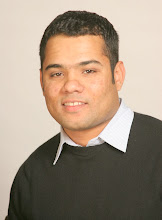Boston Scientific: The Context
The purpose of my visit to Boston Scientific (Maple Grove, MN) was to learn about the innovation programs that Boston Scientific has in place. On a brisk morning (if memory serves me right, the temperature was a balmy 1˚ F) I attended a nice breakfast reception, followed by an energetic talk by Randy Schiestl (VP, Product & Technology Innovations). Randy gave an overview of Boston Scientific and highlighted the accolades that the organization had won for its innovation programs (2005 Shingo Prize for Excellence in Manufacturing; 2005 Industry Week’s Best Plant; 2006, UBS Investment Research ranked the company number one in Technology Strength in a study of the intellectual property patents). Currently, Boston Scientific has about 28,000 employees spread out in 22 countries, with the headquarters being in Natick, MA. The company has four main divisions: Cardiovascular (which includes Interventional Cardiology, Peripheral Interventions, Vascular Surgery, etc), Endosurgery (Endoscopy, Oncology, and Urology), Neurormodulation, and Guidant. Boston Scientific is an $8 billion dollar company today, growing from $2 million in 1979.
Chris Pelerini (Manager, Technology Development Process) discussed the various communication programs, incentives, and organizational support mechanisms in place to foster innovation; Boston Scientific has an extensive review process in place to mobilize innovative projects. These include reviews by various technical boards, a technology executive committee. Susan Trahan (Director, Portfolio Planning) wrapped up the day by highlighting success factors, critical barriers to innovation, and the next steps in the organization’s innovation programs. Overall, I enjoyed my visit to the Maple Grove area, and learnt a lot from the visit to Boston Scientific. Thanks to all who helped organize the visit!
The Need for Innovation
Randy discussed how the US faces epidemics of obesity and diabetes, and why the need for new less invasive techniques of treating these were necessary. The calling to make less intensive medical devices is a noble one. Employees of Boston Scientific are bound together by their interest in working out problems, coming out with new discoveries, and pushing the frontiers of less invasive medical technologies.
One of the major growth strategies of the organization has been the pursuit of acquiring innovative organizations. This reveals a critical nugget of insight – unlike most organizations, Boston Scientific does not try to immediately merge their acquisitions into their manifold existing operations. Upon acquisition, they allow the acquired entity to run on its own, and then slowly begin a phased integration process. They thus discover and understand the peculiarities of the new organization from an operational point of view. Integration, right off the bat, without adequate time for assimilation and cross-fertilization of ideas is not appropriate. Boston Scientific learnt this lesson through past failures. Most recently, the organization acquired Guidant Corporation, and hopefully they will be able to turn this acquisition into a strategic capability.

No comments:
Post a Comment